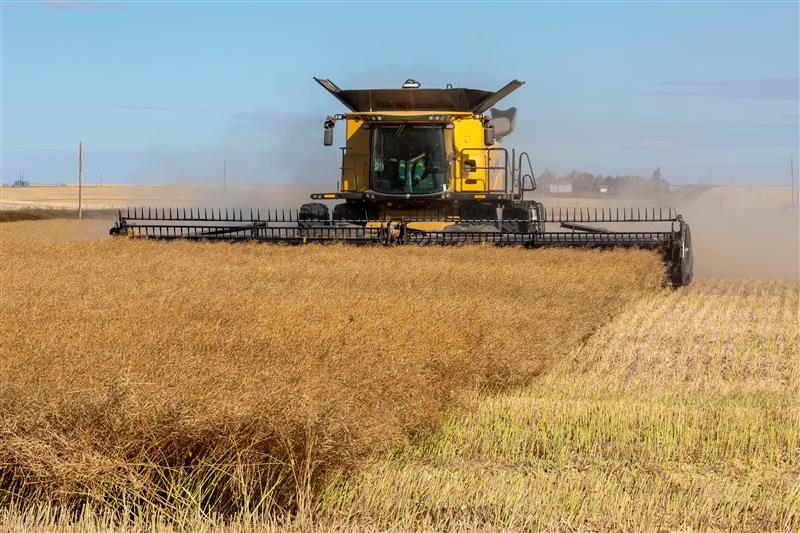Statistics Canada found one million extra acres of canola in its June 24 estimate of principal field crops, which could present a challenge for exporters who have to sell that additional production.
The agency now forecasts a record 15.8 million acres of the oilseed, up from its March seeding intentions estimate of 14.8 million acres.
That will almost certainly lead Agriculture Canada to boost its production estimate of 9.3 million tonnes.
“I think the possibility exists for a 10 to 10.5 million tonne crop,” said Chris Anderson, vice-president of crop production with the Canola Council of Canada.
Read Also

European wheat production makes big recovery
EU crop prospects are vastly improved, which could mean fewer canola and durum imports from Canada.
The council is sticking with its forecast of average yields despite reports of early-season problems with the canola crop.
In its June 22 crop report, Saskatchewan Agriculture said 69 percent of the oilseed crop is behind normal development and that nearly half was in fair, poor or very poor condition.
Anderson said canola is on average 10 days to two weeks behind normal development after being hit with everything from frost to flea beetles and heavy rain.
“It just seems that everywhere has gotten something this year that has impaired early season establishment.”
But it is too early to say the crop is at major risk for fall frost damage. Weather conditions over the next six to eight weeks will dictate whether the council needs to discount its yield expectations, said Anderson.
A 10.5 million tonne crop would be a 1.75 million tonne improvement over last year’s harvest, adding to what is forecast to be a large global rapeseed crop.
In its June 11 Oil Crops Outlook, the United States Department of Agriculture forecast 51.2 million tonnes of world rapeseed production, up eight percent from the 2007-08 crop. And that was before Canada found the additional one million acres of canola.
Ukrainian growers are forecast to produce 2.4 million tonnes of rapeseed, up from 1.1 million tonnes last year. Nearly all of the production will be destined for export.
Australia is also forecast to make a big rebound. It estimates 1.67 million tonnes of canola production and 999,000 tonnes of exports, up 56 and 87 percent respectively.
Rapeseed production in Russia is set to rise by 11 percent to 700,000 tonnes, although most of that crop will be consumed domestically.
All that extra production will hit the market at a time when China is expected to reduce its rapeseed import needs in 2008-09 to around 400,000 tonnes, down from 850,000 tonnes in 2007-08, due to improved domestic production prospects despite an early-season weather setback.
But Canadian canola officials are not overly concerned about the global supply and demand outlook.
“At this stage I wouldn’t say it’s any cause for panic or anything,” said Dave Hickling, vice-president of canola utilization with the council.
Canadian crushers will consume about four million tonnes of canola seed this year and “significantly over four million tonnes” in 2008-09. If the industry can match the 5.5 million tonnes of exports achieved in each of the last two years, that will mop up most of a 10.5 million tonne harvest.
But that could be a challenge. Canada will likely lose some of the market share it had been filling on Australia’s behalf in places like Pakistan, Bangladesh, China and Japan.
It could also lose ground to Ukraine in Pakistan, Bangladesh and the United Arab Emirates, although much of Ukraine’s excess production will likely go to the European Union, which is expected to be in the market for an extra one million tonnes of rapeseed.
The good news is that Canada has been expanding exports closer to home. Mexico and the United States bought 1.5 million tonnes of Canadian canola during the first nine months of the 2007-08 marketing campaign, up 37 percent from last year’s totals. By contrast, purchases by Asian countries dropped four percent over that same period.
Hickling said that closer-to-home purchasing pattern will likely continue in 2008-09 due to soaring transportation costs. And that isn’t a bad thing. In fact, it is part of the council’s long-term strategy to devote more attention to nearby, higher-value markets.
“Japan plus North America will continue to be our high priority markets.”
















